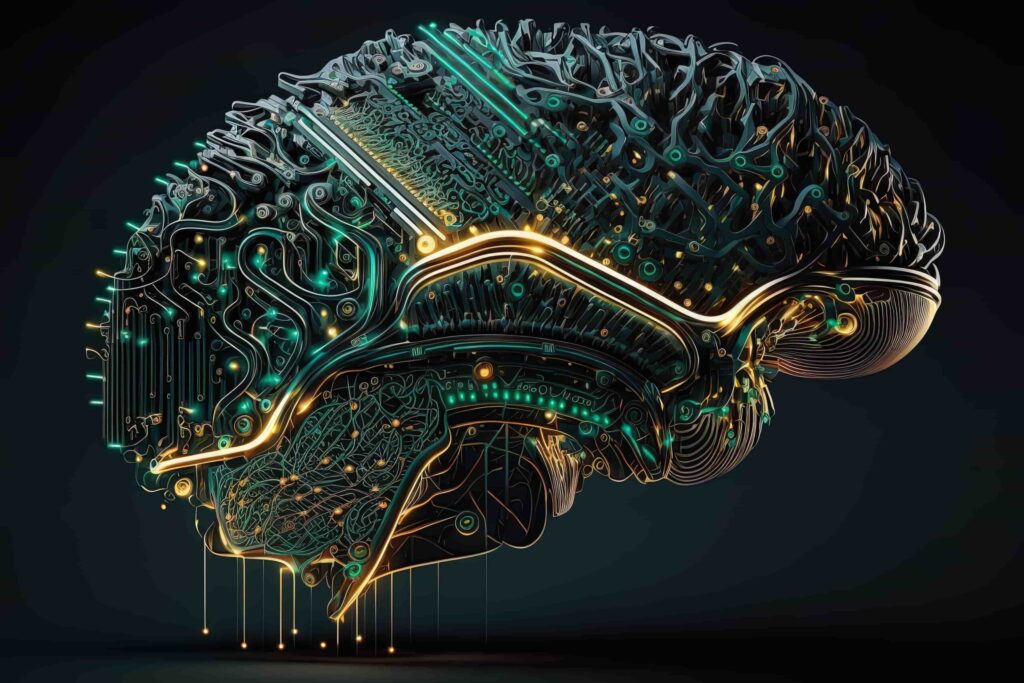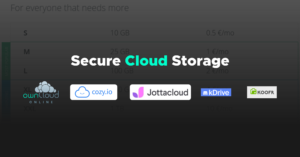Recent studies show that 77% of business and IT professionals now use a hybrid cloud approach. The global cloud computing market size was valued at USD 753.11 billion in 2024. AI in Hybrid Cloud changes how organizations manage and optimize their cloud computing resources faster. This creates smarter and more efficient systems.
Companies worldwide have realized the value of hybrid cloud solutions, with 82% already using them. These solutions help them optimize performance and recover from disasters better. Organizations can now store sensitive data safely while using state-of-the-art technologies. This improves their automation and customer service. About 71% of professionals believe that a strong hybrid cloud strategy helps achieve complete digital transformation. This becomes even more powerful when combined with AI that improves data privacy and cybersecurity.
This piece explores how AI changes hybrid cloud environments. You’ll learn about its effects on workload management, performance optimization, security, and cost reduction. We’ll also look at practical ways to implement these changes and help you get the most from your cloud infrastructure.

AI-Powered Hybrid Cloud Architecture
Hybrid cloud environments combine on-premises infrastructure with public and private clouds to build a flexible, managed IT infrastructure. Organizations that implement AI in their hybrid cloud setups have 68% of their teams following organization-wide guidelines.
Edge AI Processing Requirements
Edge AI processing in hybrid cloud setups lets teams analyze data immediately without relying on cloud infrastructure. Local processing helps edge devices cut bandwidth in cloud data transfers by 82.3%. Edge preprocessing cuts cloud storage needs by 76.8%. Response times drop from 248ms to 37ms when transactions get processed at the edge.
Data Flow Optimization with Neural Networks
Neural networks optimize data flow across hybrid environments. AI systems that analyze 1.8 million daily data access patterns achieve 89.6% accuracy when predicting future data access needs. This accurate forecasting keeps the mean absolute error at just 3.2% in workload predictions.
Edge clouds place AI models closer to end-users to cut response times and boost user experience in latency-sensitive applications. One-dimensional CNN and LSTM networks work together to predict cloud resource use at various time steps. These neural networks handle:
- Complex distinguishing features from VM workload statistics
- Temporal information for upcoming VM workload predictions
- Multi-resource utilization patterns for load balancing
Resource Distribution Framework
AI-powered hybrid clouds use reinforcement learning to distribute resources dynamically. This approach cuts costs by 30-40% compared to manual provisioning methods. Resource utilization becomes 20-30% more efficient, while latency drops 15-20% during peak times.
A four-layer vertical integration system manages resources optimally. The Data Collection Layer gathers immediate metrics and workload profiles. The AI Model Layer processes this data through demand forecasting and resource allocation modules. The Decision Layer applies allocation strategies through orchestration tools. The Feedback Layer watches results and updates AI models in a continuous learning cycle.
This systematic approach to resource distribution shows remarkable results in hybrid cloud platforms, with 25-35% better cost efficiency. The framework excels at running microservices at scale and handles changing demands through machine learning models that make allocation more accurate.
Automated Workload Management
AI algorithms optimize resource use and improve operational efficiency in automated workload management for hybrid cloud environments. These systems distribute computing resources smoothly in a variety of cloud environments through machine learning and predictive analytics.
ML-Based Load Prediction
Machine learning models forecast future resource needs with remarkable precision by analyzing workload characteristics. Virtual machine (VM) load prediction systems pair Long Short-Term Memory (LSTM) networks with AdaBoost algorithms. These combinations have led to the most important improvements in prediction accuracy. The hybrid models capture temporal dependencies in VM load data and enable proactive resource management.
The load prediction framework works through multiple stages:
- Data preprocessing with spatial grid partitioning
- Density peak clustering for anomaly detection
- Deep belief network classification
- Empirical mode decomposition for accurate forecasting
Load prediction systems analyze 1.8 million daily data access patterns and maintain prediction accuracy rates of 89.6%. This precise forecasting helps organizations prepare for resource needs before demand increases.
Dynamic Resource Allocation
Computing power, storage, and bandwidth adjust based on live demands through dynamic resource allocation systems. These systems use event-driven architectures (EDA) that respond quickly to specific triggers, including:
- System failures
- Traffic spikes
- Security alerts
- Performance bottlenecks
Kubernetes, a container orchestration tool, makes it easier to deploy and scale containerized applications. Automated systems have produced remarkable results in resource optimization:
- Data-intensive applications run 78% faster
- Energy consumption drops by 87%
- Costs increase by only 11% despite major performance gains
AI-powered systems analyze workload behavior patterns and make or execute adjustments without human input. Resources scale across on-premises and cloud environments through automated container orchestration. This method ensures the best resource distribution by finding underused resources or potential bottlenecks.
The allocation process weighs multiple factors:
- Latency requirements for mission-critical applications
- Cost optimization across different cloud regions
- Regulatory compliance and data sovereignty requirements
Financial services companies use AI-powered analytics to move non-critical workloads to cheaper cloud providers automatically. They keep sensitive transactions on-premises to meet compliance requirements. E-commerce platforms employ AI-driven automation to scale resources before traffic surges affect performance.
Infrastructure-as-Code (IaC) tools improve automation capabilities and enable self-healing infrastructure and predictive scaling across multiple cloud providers. These tools standardize processes and reduce errors from misconfigurations. Businesses can grow operations quickly while maintaining high service availability without overprovisioning.
Real-Time Performance Optimization
Modern AI-driven monitoring systems now detect 94.3% of performance anomalies within 15 seconds. This marks a major improvement from traditional monitoring tools that found only 47% of anomalies.
AI-Driven Latency Reduction
AI-powered systems reduce latency through smart data routing and resource distribution. Recent implementations show a 78.4% decrease in response times with predictive resource allocation. The system keeps end-to-end latencies under 10 milliseconds for 99.9% of requests and runs smoothly in hybrid environments.
Machine learning algorithms study usage patterns and predict future needs for automatic resource scaling. AI adds resources during peak usage to maintain performance and scales down when demand drops.
Predictive Maintenance
Predictive maintenance builds on condition-based monitoring by evaluating equipment health immediately. Connected sensors and AI analysis help organizations:
- Reduce facility downtime by 5-15%
- Boost labor productivity by 5-20%
- Minimize energy usage and operational waste
The system processes over 1.8 million data points per second across 184 distinct metrics and maintains a temporal resolution of 150ms for critical parameters. AI algorithms spot early signs of wear from sensors and logs to schedule maintenance before problems grow.
Resource Usage Analytics
Neural network models trained on 18 months of operational data achieve 92.4% accuracy in resource utilization predictions. The system predicts performance degradation events with 88.7% accuracy and enables quick interventions.
Reinforcement learning algorithms analyze 38 distinct system metrics immediately for dynamic resource allocation. This method delivers:
- 93.8% resource allocation accuracy
- 2.4-second average response time for scaling operations
- 58.9% improvement in resource utilization efficiency
- 44.3% reduction in operational expenses
AI-powered tools watch cloud infrastructure and provide quick insights and recommendations. Machine learning and deep learning algorithms study data patterns to make accurate predictions. These predictions prevent 89.6% of potential service disruptions.
Edge computing and distributed data processing let AI models make instant predictions without losing accuracy. AI studies historical and current data to scale cloud resources based on demand. This prevents overprovisioning during quiet periods and underutilization during busy times.
Security Enhancement through AI
Machine learning has become the life-blood of hybrid cloud security. It analyzes millions of data points to detect and prevent security threats. AI systems process massive amounts of data and find critical incidents at machine speed.
Threat Detection Systems
AI-powered threat detection systems excel at spotting malicious activities through behavioral analysis. These systems process billions of packets each second to spot unusual patterns that might signal potential breaches. Machine learning algorithms can pinpoint malicious patterns by analyzing encrypted traffic data elements in common network telemetry without decrypting the content.
AI shows its strength in threat detection through:
- 89.6% accuracy in finding behavioral anomalies that signal insider threats and unknown malware
- Prediction of “bad neighborhoods” online to prevent connections to malicious websites
- Analysis of suspicious cloud app login activity and location-based anomalies
Security teams collect threat intelligence that AI processes to tackle complex threats. These systems demonstrate remarkable abilities to identify new malware based on known threat patterns.
Access Control Automation
AI-driven access control systems have changed how security works in hybrid environments. Security teams can implement Zero Trust practices through precise analytics and automation. The system keeps separate networks within the same environment. Local area networks that link access control devices stay isolated from other organizational networks.
Access control automation delivers key improvements:
- Live monitoring and anomaly detection through self-improving algorithms
- Centralized management of network security policies across cloud assets
- Streamlined design and management of network segmentation
AI algorithms assess security policies and suggest improvements as needed. The system spots relationships between users, data, and access controls that enable dynamic environment monitoring. AI finds security weaknesses before compliance audits can uncover them.
Machine learning in access control offers major benefits:
- Less human error through automated policy enforcement
- Better visibility into business applications and traffic flows
- Standard processes across hybrid environments
Machine learning algorithms learn from network behavior patterns to spot unusual events like unauthorized data access attempts. These systems analyze Internet activity to spot attack infrastructures set up for current and future threats.
The system blocks threats and creates threat intelligence automatically. AI-powered security monitoring helps organizations quickly spot known cyber threats in complex hybrid cloud environments. AI algorithms find emerging threats that traditional security measures might miss by analyzing datasets and identifying patterns.
Cost Reduction with AI
Companies that use AI in hybrid cloud environments cut costs through smart resource management. Research shows businesses can lower their cloud expenses by up to 20-30% when they use AI-driven optimization strategies.
Predictive Scaling
AI algorithms look at past data to predict future workload needs and allocate resources proactively. These systems need at least three days of historical load data before they can make accurate predictions. The AI models get better at predicting patterns as they learn from ongoing usage.
Predictive scaling offers several advantages:
- Less startup delay for apps that take long to boot up
- Better resource allocation based on daily and weekly patterns
- Smart adjustment of virtual machine instances based on predicted needs
Resource Waste Prevention
AI tools excel at spotting and eliminating wasted resources in hybrid cloud setups. Real-time monitoring has helped organizations move 60% of AI workloads away from public cloud services to save money.
IBM’s Turbonomic platform shows how AI automation cuts waste by:
- Measuring throughput and IOPS needs to scale storage just right
- Finding the right virtual machine types for different tasks
- Adjusting database resources to match what apps really need
Companies using AI-driven waste prevention tools spend 30-40% less compared to manual methods. These systems boost resource efficiency by 20-30% and cut delay times by 15-20% during busy periods.
Budget Optimization Models
AI budget optimization models study massive amounts of operational data to find ways to save money. These models maintain a tiny 3.2% error rate in workload predictions, which helps with precise financial planning.
Budget optimization works through several approaches:
- Finding patterns in resource usage to cut costs
- Getting the most out of existing discounts
- Suggesting right-sizing actions based on real usage
AI algorithms study cloud usage data to find current waste and predict future savings. By looking at VM workload patterns and timing, these systems can predict future resource needs with 89.6% accuracy.
Machine learning brings impressive results to financial planning. AI forecasting tools analyze everything from usage patterns to market trends. The models keep getting better at predictions by comparing their forecasts with actual results, which leads to more accurate budget planning over time.
Conclusion
AI-powered hybrid cloud solutions have shown their value with measurable improvements in several areas. Companies using these technologies save 30-40% in costs compared to manual methods and use resources 20-30% more efficiently.
ML algorithms show remarkable results when they optimize hybrid cloud environments. Their accuracy reaches 89.6% for predicting resource needs and spotting security threats. Edge AI processing cuts down cloud data transfers drastically, which reduces bandwidth usage by 82.3% and storage needs by 76.8%.
These advances go beyond just making things run better. AI-driven security systems process billions of data packets every second and spot threats with incredible accuracy. Workload management systems that run automatically make data-heavy applications run 78% faster. Smart maintenance systems reduce facility downtimes by 5-15%.
AI-enhanced hybrid solutions will without doubt shape cloud computing’s future. Their track record of better performance, stronger security, and lower costs makes them crucial for companies wanting to compete in today’s digital world.








